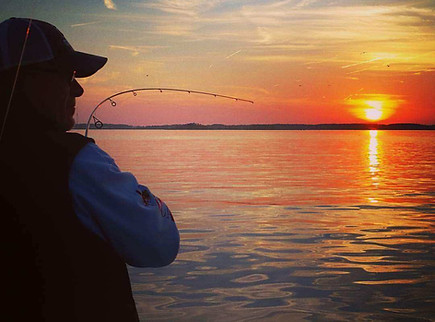

Chesapeake Bay Charter Services
Chesapeake Bay Light Tackle
Similar in nature to fly fishing, there’s an art to drifting an artificial jig along with the current. When fish are acting finicky or when you’re looking to catch bigger fish out of the schools, it’s critical that the lure moves naturally downstream toward the fish. Since one cannot mend a line like in fly fishing, light tackle anglers use a sweeping technique in high current situations.
Looking to catch striped bass in the Chesapeake Bay? Then vertical jigging with light tackle is a must. It can be done in both deep and shallow water and will produce when all other methods fail. Basic vertical jigging technique requires stationing the boat directly over the fish. Never drop a jig unless you've either located fish on the finder, or feel confident that they’ll be nearby at any moment. Make no mistake, learning to find the fish is the hardest part of light tackle fishing. High current locations are always best, but fish will also station themselves around underwater humps, ledges, wrecks or other structure. In the summer and fall, working birds will help you find the fish, but depending on birds can mean many sad days on the water. It’s far better to learn the habitat fish prefer and work those areas. Often the birds and breakers will be waiting for you when you arrive.
CONTACT US NOW TO BOOK YOUR TOUR!
There's something really special about catching BIG FISH on relatively light tackle, and yes it can be done! Whether casting or trolling, we have this technique down pat and we invite you to book your next light tackle fishing tour on the Chesapeake Bay.
